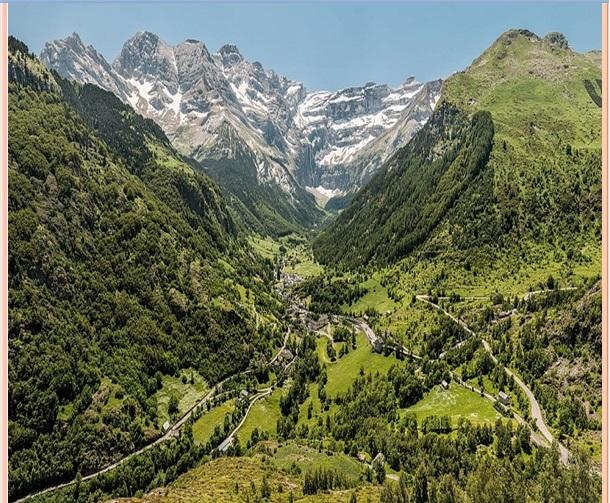Why Are The Pyrenees Mountains So Prominent?
Majestic Heights Unveiled: The Pyrenees' Geological, Cultural, and Natural Prominence
Why Ae The Pyrenees Mountains So Prominent

Nestled along the border of France and Spain. The Pyrenees Mountains are a hidden gem of natural beauty and majesty. Standing proudly as a barrier between the Iberian Peninsula and the rest of Europe. The Pyrenees have captured the hearts of adventurers, hikers, and nature lovers for centuries. But what makes the Pyrenees Mountains so prominent in the world of geography, geology, and culture? In this blog post, we embark on a journey to uncover the reasons behind the prominence of the Pyrenees.
Geological Origins: A Tectonic Masterpiece
The geological origins of the Pyrenees Mountains are rooted in the complex dance of tectonic plates.
Convergent Boundaries:
The Pyrenees are a result of the ongoing convergence of the Eurasian Plate and the Iberian Plate. This collision started around 100 million years ago during the Cretaceous period.
Uplift and Folded Rocks:
The immense pressure generated by the collision caused the Earth’s crust to uplift and fold, giving birth to the Pyrenees. The rocks were contorted, forming the iconic peaks and valleys we see today.
Continual Growth:
The Pyrenees are still rising, albeit at a slow rate, showcasing the dynamic nature of Earth’s geology.
Geographic Location: A Natural Divide
One of the key factors contributing to the prominence of the Pyrenees is their strategic geographic location.
Natural Border:
The Pyrenees Mountains serve as a natural border between France and Spain, stretching approximately 430 kilometers (267 miles). This division has played a significant historical and cultural role.
Iberian Peninsula’s Gateway:
The Pyrenees act as a gateway to the Iberian Peninsula, separating it from the rest of Europe. Travelers and armies historically faced this natural barrier, adding to its importance.
Stunning Landscapes:
The Pyrenees’ abrupt rise from the surrounding plains creates a dramatic and stunning landscape. Making them a prominent feature of the region.
Impressive Peaks: The Pyrenean Giants
The Pyrenees are home to a collection of towering peaks that contribute to their prominence.
Aneto:
Aneto, the highest peak in the Pyrenees, stands at an elevation of 3,404 meters (11,168 feet). Its icy glaciers and challenging ascent attract mountaineers from around the world.
Mont Perdu:
Mont Perdu, a UNESCO World Heritage Site, is renowned for its striking scenery and unique geological formations.
Vignemale:
Vignemale, the highest peak on the French side, offers breathtaking views of the surrounding landscapes.
Countless Peaks:
The Pyrenees are dotted with numerous peaks exceeding 3,000 meters (9,800 feet), adding to their grandeur and appeal to mountain enthusiasts.
Glacial Activity: Shaping the Pyrenean Landscape
The Pyrenees’ history of glaciation has played a pivotal role in shaping their distinctive landscape.
Ice Ages:
During the Pleistocene epoch, a series of ice ages saw glaciers advancing and retreating across the Pyrenees. This glacial activity carved deep valleys, cirques, and U-shaped formations, creating the dramatic landscapes.
Cirques and Lakes:
The Pyrenees are dotted with glacial cirques, many of which contain stunning alpine lakes, enhancing the region’s charm.
Moraines and Rock Deposits:
As glaciers retreated, they left behind moraines—ridges of unconsolidated debris—that further accentuate the Pyrenees’ scenic beauty.
Biodiversity: A Natural Haven
The Pyrenees Mountains are not just geologically prominent but also a haven for biodiversity.
Flora Diversity:
The Pyrenees are home to a wide range of plant species, including endemic and rare species adapted to the high-altitude environments.
Wildlife Sanctuary:
The Pyrenees provide habitats for diverse wildlife, including chamois, marmots, Pyrenean desmans, and the elusive brown bear.
Conservation Efforts:
Conservation efforts in the region aim to protect the unique biodiversity of the Pyrenees, further highlighting their ecological prominence.
Cultural Significance: A Tapestry of Traditions
The cultural significance of the Pyrenees adds another layer to their prominence.
Historical Crossroads:
The Pyrenees have been a historical crossroads for different cultures, languages, and traditions. This rich tapestry is reflected in the region’s architecture, cuisine, and festivals.
Transhumance:
Transhumance, the seasonal migration of livestock, is a cultural practice that has shaped the Pyrenean way of life for centuries.
Hiking and Pilgrimages:
The Pyrenees are a popular destination for hikers and pilgrims, with trails like the Camino de Santiago crossing the range.
Conclusion: Nature’s Masterpiece
The prominence of the Pyrenees Mountains is a multi-faceted marvel. Encompassing geological forces, strategic location, towering peaks, glacial history, biodiversity, cultural richness, and more. As we gaze upon their majestic heights and explore their pristine landscapes, we are reminded that the Pyrenees are not just mountains. They are a testament to the power and beauty of the natural world. Their prominence is not only physical but also deeply rooted in the stories, traditions, and awe that they inspire in all who encounter them.




